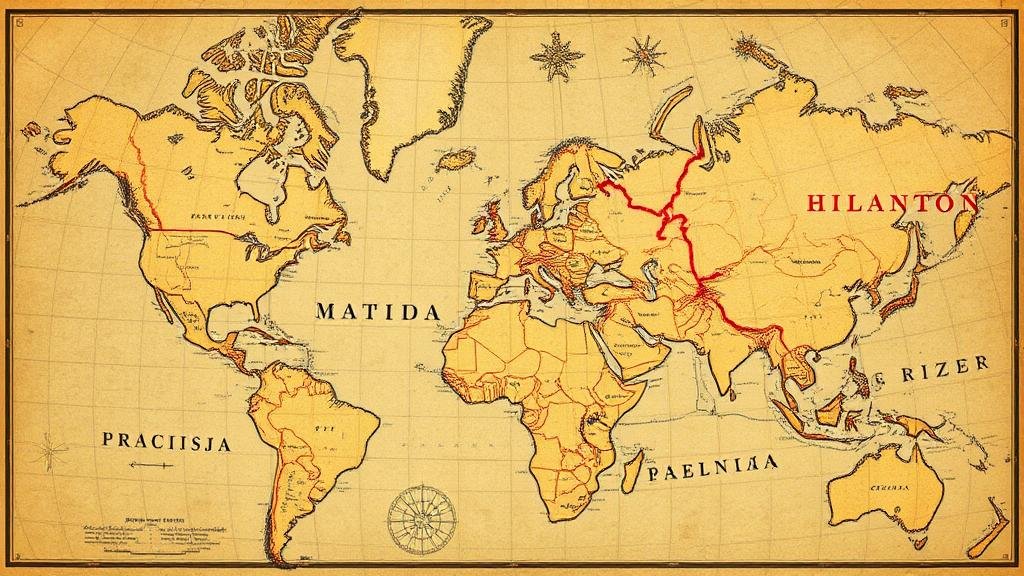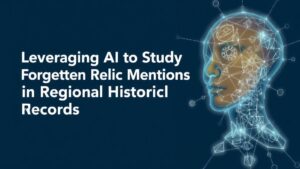Leveraging AI to Automate Historical Map Comparisons for Artifact Research
Leveraging AI to Automate Historical Map Comparisons for Artifact Research
The advent of artificial intelligence (AI) has created a profound shift in various domains, including historical research. This article elucidates the potential of AI-driven technologies in automating the process of historical map comparisons, a crucial task for artifact research. The utilization of AI in this context not only enhances efficiency but also contributes to deeper insights into historical contexts and migrations of artifacts.
Introduction
Historical map comparisons are essential in understanding geographic changes over time, impacting artifact research significantly. Traditional methods of comparing historical maps often involve labor-intensive manual techniques, which can introduce biases and errors. AI offers a solution through automation, allowing researchers to analyze vast datasets with improved accuracy and speed.
The Role of AI in Historical Map Analysis
Artificial intelligence encompasses various machine learning (ML) algorithms and computer vision technologies that can be applied to historical cartographic materials. Key functions include:
- Image Recognition: AI can identify and classify features on maps, such as roads, rivers, and landmarks.
- Change Detection: Algorithms can highlight differences between historical maps over defined time periods.
- Data Integration: AI can aggregate data from multiple sources, providing a comprehensive analysis of artifacts geographic contexts.
Case Studies and Applications
Several institutions have successfully integrated AI technologies into their research methodologies. One notable example is the Stanford University Libraries, which applied machine learning algorithms to analyze historical military maps from the U.S. Civil War (1861-1865). By automating the comparison of these maps, researchers were able to identify patterns in troop movements that were previously obscured by manual analysis.
Another significant project occurred at the British Library, where AI was employed to digitize and compare over 200 years of historical maps. project compared maps from various periods, notably assessing the changes in land use and urban development in London from 1800 to 2020. Preliminary results indicated that AI could rapidly process data, delivering insights that might take teams of historians months or years to uncover.
Technological Framework and Methodology
The integration of AI into historical map analysis requires a structured technological framework. The following components are essential:
- Data Collection: High-resolution digital scans of historical maps from archives and libraries.
- Machine Learning Models: Utilization of convolutional neural networks (CNNs) for image processing and analysis.
- Comparison Algorithms: Development of algorithms that can quantify differences between overlays of contemporary and historical maps.
For artifact research, these technologies can assist historians in tracking provenance by correlating artifacts with specific geographic changes observed on historical maps.
Challenges and Limitations
Despite the promising capabilities of AI, various challenges must be addressed to enhance its effectiveness in historical map comparisons:
- Data Quality: The accuracy of AI analysis is highly dependent on the quality of input data. Many historical maps may have inaccuracies due to damage, fading, or distortion.
- Interpretation of Results: AI can identify changes, but the historical context often requires human interpretation to derive meaningful insights.
- Accessibility of Data: Limited access to high-quality historical map databases can hinder AI’s potential, necessitating collaborations between institutions.
Conclusions and Future Directions
The automation of historical map comparisons through AI represents a transformative approach to artifact research. By overcoming the limitations of traditional methods, researchers can explore historical narratives with unprecedented depth and clarity. Future innovations may include:
- Enhanced algorithms that incorporate natural language processing (NLP) to analyze accompanying textual materials for richer contextual insights.
- Development of open-source platforms for greater accessibility to AI tools in historical research.
- Collaboration between AI specialists and historians to better align technological advancements with historical methodologies.
In summary, leveraging AI to automate historical map comparisons offers a promising avenue for advancing artifact research. By embracing these technological advancements, historians can unlock new dimensions of understanding regarding our past.
Actionable Takeaways
- Historians should explore partnerships with AI specialists to harness the full potential of automated analysis.
- Investment in high-quality data digitization efforts is crucial to improve AI functionality.
- Understanding AI’s limitations will assist researchers in interpreting results effectively, ensuring relevant historical context is maintained.
The intersection of AI technology and historical research presents a landscape ripe for exploration, emphasizing the importance of continued collaboration and innovation in the field.



